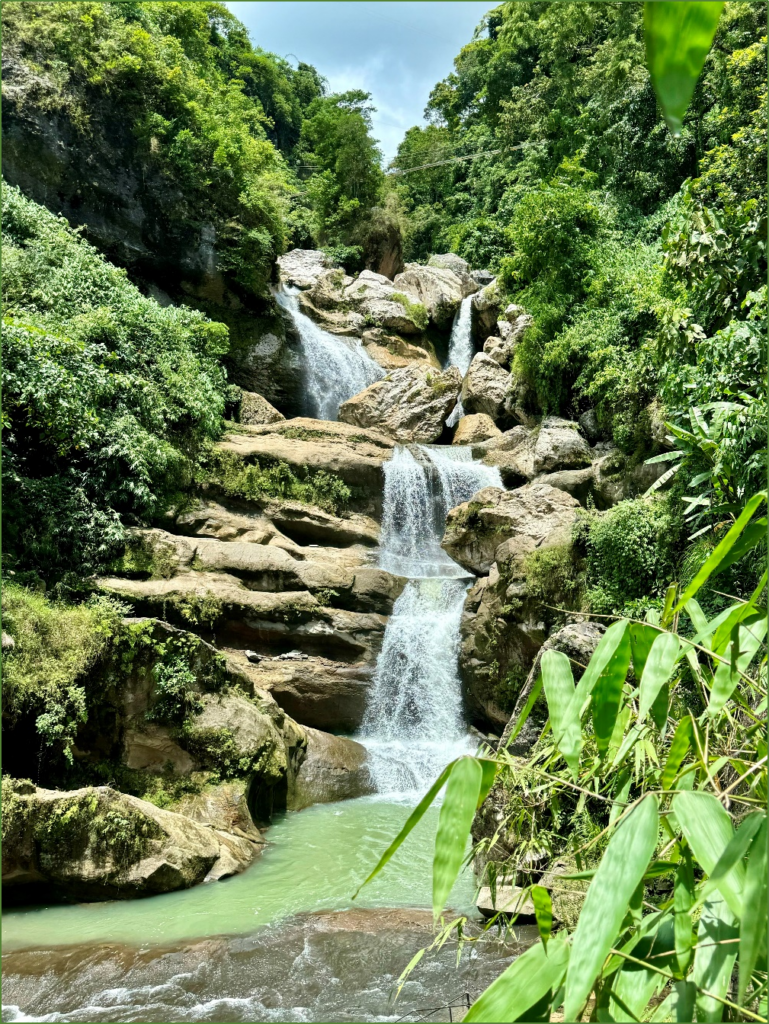by: Edgar W. Sapigao
The article explores the Kamal tradition in Taba-ao, Kapangan, Benguet, emphasizing its significance in promoting community camaraderie through cooperative labor. It aligns with the UN Sustainable Development Goals (SDGs), particularly SDG 11 (Sustainable Cities and Communities) and SDG 4 (Quality Education). The tradition fosters sustainable community practices, upholds Indigenous Knowledge, Skills, and Practices (IKSP), and enhances social cohesion, making it relevant to contemporary educational challenges and trends, especially for doctoral students focusing on educational management.
By highlighting the Kamal practice in relation to education, this article provides valuable insights into how IKSP can inform educational management and leadership. This perspective is significant for students undertaking the subject of “Current Trends, Problems, and Issues in Education”. Kamal demonstrates the importance of fostering community engagement and participation, which are essential in addressing the challenges of education, such as equity, inclusivity, and sustainability.
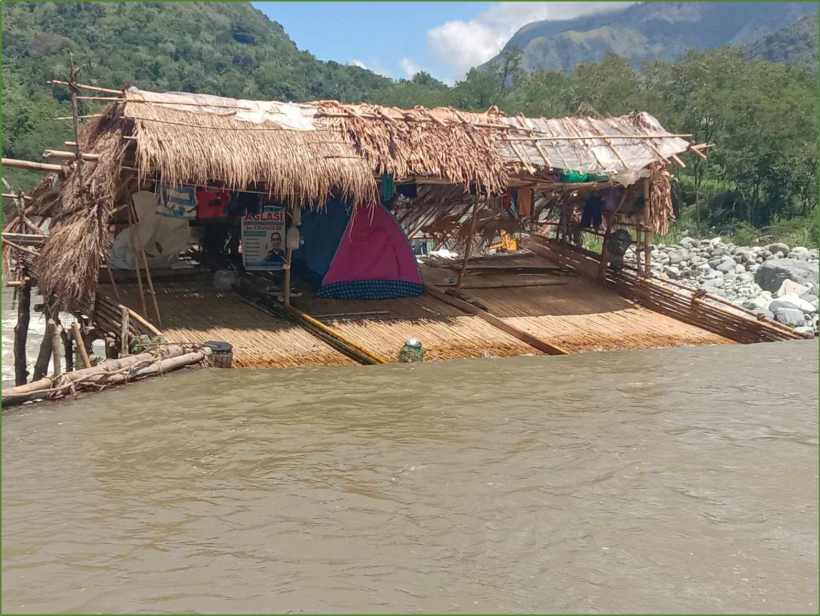
Rustic but unmatched: Asal along the Amburayan River is a traditional fishing practice in Taba-ao, Kapangan, showcasing the timeless tradition of local fishermen.
Kamal: An Indigenous Tradition of Unity
Barangay Taba-ao in Kapangan, Benguet, is a rural community of 1,832 people, largely dependent on agriculture. The farming and fishing practices in the area foster a deep sense of cooperation among its residents, evident in their IKSPs, such as the Kamal . Kamal refers to cooperative work, where neighbors gather to assist in heavy labor projects, such as building houses or working in fields. In return, the host provides food and meat as compensation, reflecting a reciprocal exchange that strengthens social bonds. This tradition is an example of SDG 11, which promotes inclusive and sustainable communities, as it encourages resource-sharing and mutual support.
The practice of Kamal resonates deeply with contemporary educational trends, especially those related to inclusive education and community participation. Educational leaders, particularly those studying educational management, can draw valuable lessons from Kamal to foster collaboration and teamwork within learning communities. This tradition of cooperative labor and shared rewards parallels collaborative learning strategies in modern education, where shared goals and mutual support enhance learning outcomes. Kupang (2021) describes a similar practice among the Kankanaey called Og-ogbo or Ob-obbo . Like Kamal (an Ibaloi term), Og-ogbo involves individuals exchanging labor by working together on each other’s farms, construction projects, or other tasks, making such work more manageable, especially during planting and harvest seasons.
Cultural Significance of Kamal
Kamal has been practiced for generations, ensuring the completion of tasks more efficiently while fostering a sense of unity. It typically involves men, women, and even teenagers, depending on the nature of the work. Traditionally, the host would butcher a pig or dog, divide the meat equally among the laborers, and offer rice wine, locally known as tapey , as a form of refreshment after the work was completed. The meat distributed serves as the laborers’ compensation, and it is typically shared with their families, reinforcing the communal aspect of the practice.
This system of community labor underscores the importance of collective responsibility in rural settings. It also highlights the role of cultural practices in shaping social structures and values. The meat distributed during Kamal, especially dog meat, has become a point of contention in modern times due to legal restrictions and evolving societal norms. The cultural right to practice Kamal, as enshrined in the Indigenous Peoples’ Rights Act , clashes with the Animal Welfare Act (Republic Act No. 8485), which prohibits the killing of dogs for food. This conflict highlights the broader challenges faced by Indigenous communities in preserving their traditions while adapting to changing legal and ethical frameworks.
For doctoral students studying Current Trends, Problems, and Issues in Education , Kamal provides an illustrative case of how local traditions can inform contemporary educational leadership. The tension between preserving Indigenous practices and adhering to modern legal standards mirrors challenges in educational management, such as balancing traditional teaching methods with innovative, technology-driven approaches. It emphasizes the need for educational leaders to be culturally sensitive and adaptable, ensuring that educational practices respect local contexts while aligning with broader legal and ethical standards.
Kamal and Sustainable Development
Kamal is an excellent example of SDG 11 (Sustainable Cities and Communities) in action. The practice promotes cooperation and shared labor, reducing the burden on individual households while fostering a sense of collective ownership of community resources. By engaging in Kamal , community members contribute to the maintenance of shared spaces, infrastructure, and agricultural lands, thereby ensuring the sustainability of their local environment.
Moreover, Kamal also aligns with SDG 4 (Quality Education) , particularly in terms of fostering inclusive and equitable education through the transmission of Indigenous knowledge. The communal spirit embedded in Kamal reflects the educational goal of promoting lifelong learning opportunities for all. By participating in Kamal, younger generations learn not only the practical skills required for agricultural work and house-building but also the values of cooperation, reciprocity, and communal responsibility. This experiential learning fosters a deeper understanding of sustainable practices and community engagement, which are critical components of quality education.
Educational management students can learn from Kamal how community-based approaches to education and labor can enhance social cohesion and collective responsibility. Integrating such Indigenous practices into formal educational curricula could offer innovative ways to address contemporary educational issues, such as student disengagement and inequity in resource distribution.
Challenges and Threat
Despite its cultural significance, Kamal faces numerous challenges that threaten its continuity. The preference for monetary compensation over traditional meat distribution, coupled with legal restrictions on the consumption of dog meat, has led to a decline in participation. Additionally, societal shifts toward urbanization and modernity have contributed to the erosion of such traditions. Younger generations, influenced by global cultural norms, are less inclined to participate in Kamal, viewing it as an outdated practice that no longer aligns with their aspirations.
These challenges mirror the broader educational issues faced by Indigenous communities, such as the loss of cultural heritage and the marginalization of Indigenous knowledge in formal education systems. For students of educational management, the case of Kamal underscores the importance of developing strategies to preserve and integrate Indigenous knowledge into mainstream education. This is essential not only for cultural preservation but also for fostering diverse perspectives and approaches in addressing contemporary educational challenges.
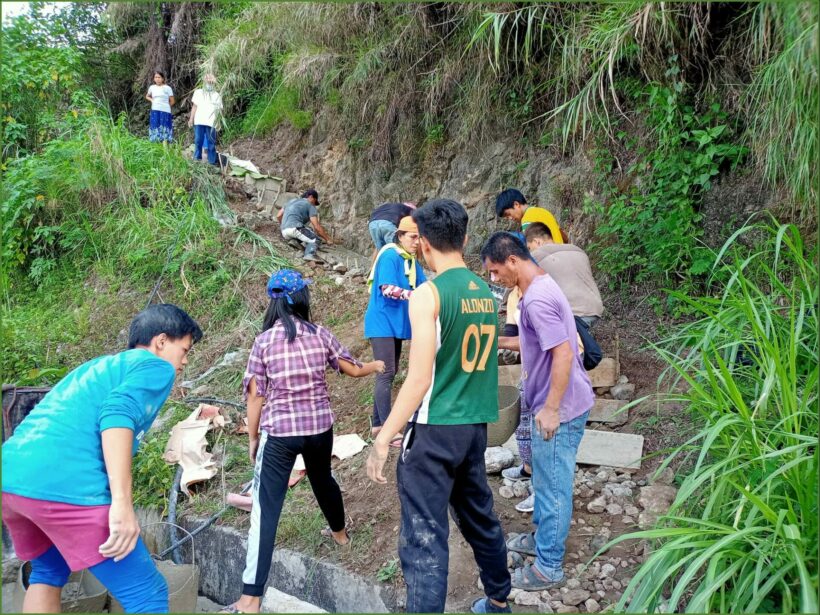
Aduyon: The people of Taba-ao uphold their community spirit by volunteering and supporting their locality.
Preserving Kamal for Future Generations
To ensure the vitality of Kamal, community leaders and cultural advocates have suggested several measures. One approach is to encourage youth participation by integrating Kamal into local educational programs. By involving students in Kamal activities, schools can foster a sense of pride in local traditions while teaching valuable life skills. Another suggestion is to adapt the practice to modern contexts by substituting dog meat with more socially acceptable alternatives, such as pork or chicken, to avoid legal complications.
Incorporating Kamal into formal education also offers a unique opportunity to bridge traditional and modern knowledge systems. For doctoral students in educational management, this integration represents a promising avenue for addressing the educational needs of Indigenous communities while promoting sustainable development. By aligning traditional practices with contemporary educational goals, leaders can create more inclusive and culturally responsive learning environments.
Informants
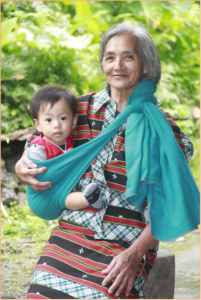
Aunt Arsenia Ablasi, 73, carries her grandchild in the traditional Ibaloi way using an (Eba) blanket. Admired for her free traditional massage healing, she serves her community generously.
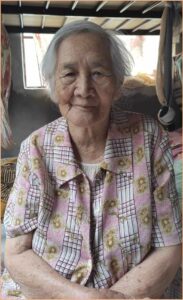
Lola Ana Calong , 91, is one of the community’s eldest members. A traditional farmer skilled in Aduyon and Kamal , she attributes her longevity to water therapy, fruits and vegetables, hydration, and plenty of sleep.
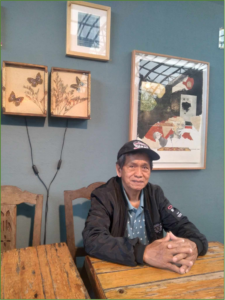
Uncle Ramon Tarcelo , a migrant from Naguilian, La Union, embraced the local culture and kamal practices. At 70, he still uses kamal , especially for labor-intensive tasks requiring extra hands.
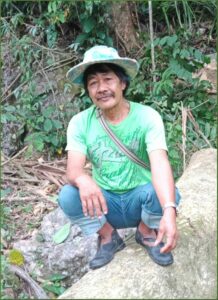
Uncle Bao-ing Coilan is a community leader and a cultural resource person. From a young age, he has participated in kamal practices and has witnessed their changes over time.
References:
A WI (2013). A WI Investigates Illegal Dog Meat Trade in the Philippines and Thailand. https://awionline.org/awi-quarterly/2013-summer/awi-investigates-illegal-dogmeat-trade-philippines-and-thailand
Igorotage (2017). Are Igorots Dog Meat-eaters? https://www.igorotage.com/blog/p/AZVQw/igorots-dog-meat-eaters
I WCT (2018). The Dog Meat Trade. https://iwct-uk.org/about/the-dog-meattrade/
Kupang, G. (2021). Tengaw, Ob-Obbo, Lumdang, and Begnas: Northern Kankanaey Cultural Rites for Well-being and Solidarity. https://www.pressenza.com/ 2021/03/ tengaw-ob-obbo-lumdang-and-begnas-northern-kankanaey-cultural-rites-for-well-being-and-solidarity/
Lacbawan (2015). Re-assembling Food and Meaning: Dirty, Unhealthy and Dangerous DogEating in the Philippines. Central European University.
Ibaloy Dictionary (2012).
About the Author:
 Edgar W. Sapigao is an educator committed to integrating culture, local tradition, and history into the educational curriculum. A communications graduate, he has been awarded Best English Teacher for his various instructional innovations, particularly his collection of community folklore storybooks. He is currently one of the instructional supervisors at La Trinidad National High School and continues to develop and improve contextualized instructional designs to enhance the reading comprehension of Filipino learners.
Edgar W. Sapigao is an educator committed to integrating culture, local tradition, and history into the educational curriculum. A communications graduate, he has been awarded Best English Teacher for his various instructional innovations, particularly his collection of community folklore storybooks. He is currently one of the instructional supervisors at La Trinidad National High School and continues to develop and improve contextualized instructional designs to enhance the reading comprehension of Filipino learners.
About the Editor:
 Genevieve B. Kupang is a professor and the Dean of the Graduate School at Baguio Central University in Baguio City. She serves as BCU’s Representative for Internationalization and is a member of the Board of Directors of the Cordillera Association of International Relations Officers (CAIRO).
Genevieve B. Kupang is a professor and the Dean of the Graduate School at Baguio Central University in Baguio City. She serves as BCU’s Representative for Internationalization and is a member of the Board of Directors of the Cordillera Association of International Relations Officers (CAIRO).


